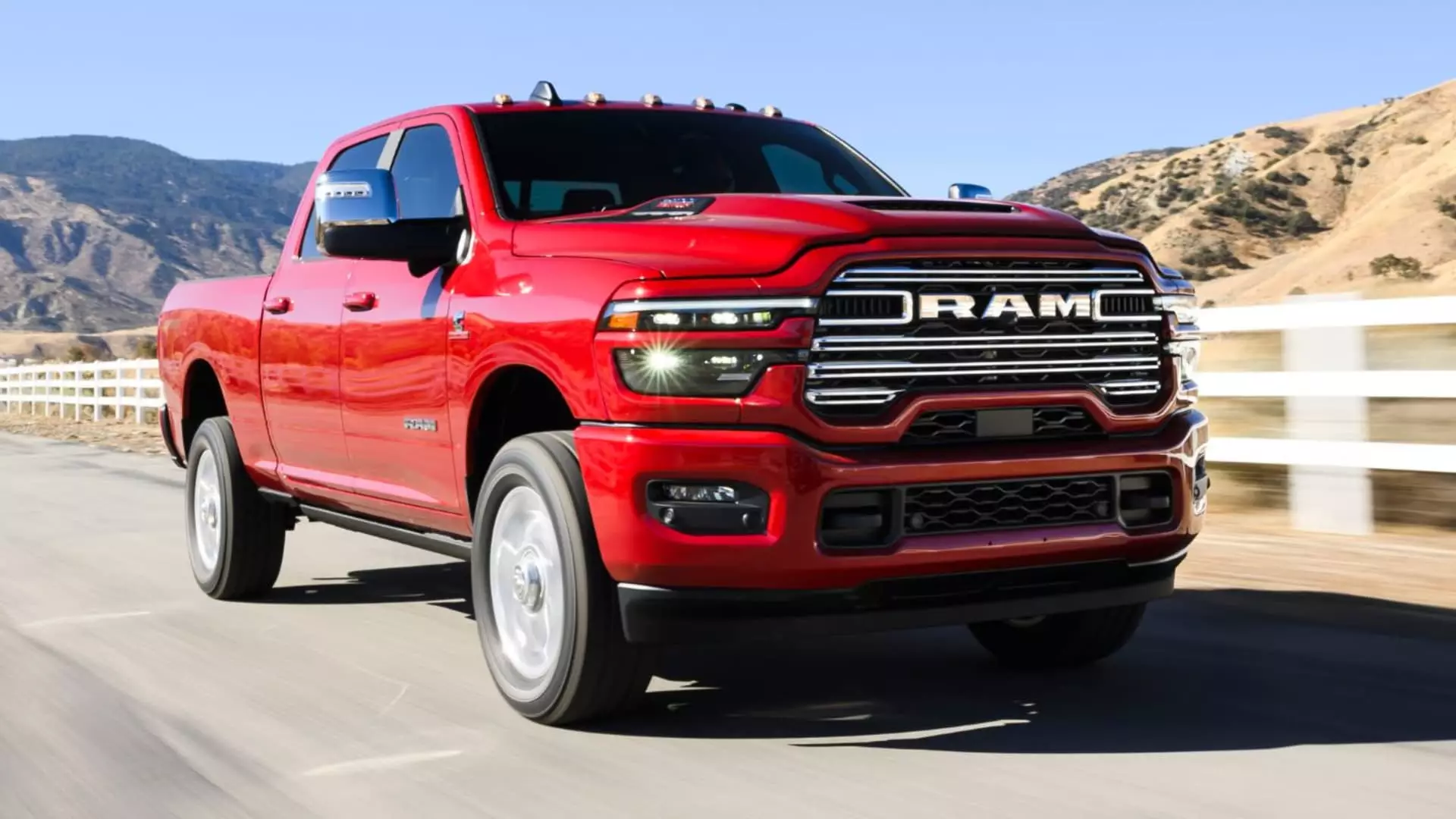In the competitive landscape of the American automotive market, Stellantis has recognized an urgent need for revitalization in its Ram truck division. After witnessing three consecutive years of declining sales, the automaker is taking significant steps to regain its footing. The newly redesigned Ram 2500 and 3500 heavy-duty trucks are poised to make their debut, offering a striking blend of enhanced features and performance. The stakes are high, as these trucks represent not just a product but the potential for the re-establishment of the Ram brand as a formidable player in the pickup market.
One of the headlining features of the revamped Ram heavy-duty trucks is the introduction of a powerful 6.7-liter Cummins turbo diesel engine. With an impressive output of 430 horsepower and top-tier torque measuring at 1,075 foot-pounds, this engine is designed to cater to the heavy-duty requirements of consumers. Such specifications underscore Ram’s commitment to meeting the rigors of towing and hauling—functions integral to the lifestyle of many truck owners. Additionally, those who prefer gasoline engines can opt for the 6.4-liter Hemi V-8, which delivers a robust 405 horsepower and 429 foot-pounds of torque, showcasing Ram’s range in catering to diverse customer preferences.
Set to hit U.S. dealerships in the early months of the year, the new Ram models will carry a noticeable price increase of approximately $2,300, beginning at $47,560. This uptick in cost poses a risk, but it may also reflect the enhancements and features that are now offered. It is crucial for Stellantis to ensure that the perceived value justifies the higher price tag. The new models must attract consumer interest while also addressing the financial considerations of potential buyers who may be wary of rising costs.
Leadership’s Insights and Strategic Vision
Tim Kuniskis, Ram’s CEO, has returned to the brand amid these crucial changes and has openly acknowledged the challenges faced during a media event. His admission of delays concerning the Ram 1500 rollout speaks volumes about potential pitfalls in execution and timing. It’s a candid recognition that the brand’s current standing can be attributed to missteps in product launches. As the automotive industry often hinges on well-timed releases, Kuniskis’ transparency reflects a desire for accountability and adjustment moving forward.
Comparison with competitors highlights the urgency of the situation: while Ram experienced a 19% decline in sales, rivals like Ford and GM’s Chevrolet managed to stabilize their sales figures. The ramifications of such disparities are profound, implying that the revamped heavy-duty configurations must not only perform well in terms of sales but also restore consumer confidence in the Ram brand. The diverse lineup for 2025, including models like the Tradesman and Limited, aims to cater to a wide array of consumers, indicating a promising yet critical pivot in their marketing strategy.
Stellantis stands at a crossroads with its latest heavy-duty Ram offerings. A well-executed product strategy that includes innovative features and competitive pricing could signal a positive pivot for the brand. As the heavy-duty truck market continues to evolve, it will be imperative for Ram to not only regain lost ground but to redefine its place within this highly competitive space. The days ahead will reveal whether their approach can effectively rally consumer support and restore confidence in the Ram nameplate.


Leave a Reply